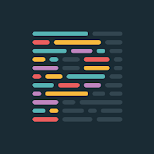OSD600- Release 0.4 Part 1
The semester is almost over and we have one more release! For Release 0.4 we must top everything we have done before in the class! Sounds challenging but fun! I first read the assignment and saw the ideas our professor gave us. I decided I want to work on Telescope again. What drew me to Telescope was the community. They were all very nice, and I enjoyed working with them last time, so why not work with them again! I went on Slack and let them know I am interested in working on Telescope again, and asked if there is anything I can do. I was told to look at this pinned issue. They are currently porting GastbyJs code to Next.js code and can use some help porting the modules. I decided to do Login/, To be honest, I have no idea how to do this (although I haven't read any of the documentation provided yet) but I'm really not worried as I know there is a large community of people, and great resources to go to to help me accomplish this. Another great thing about this is I will le
